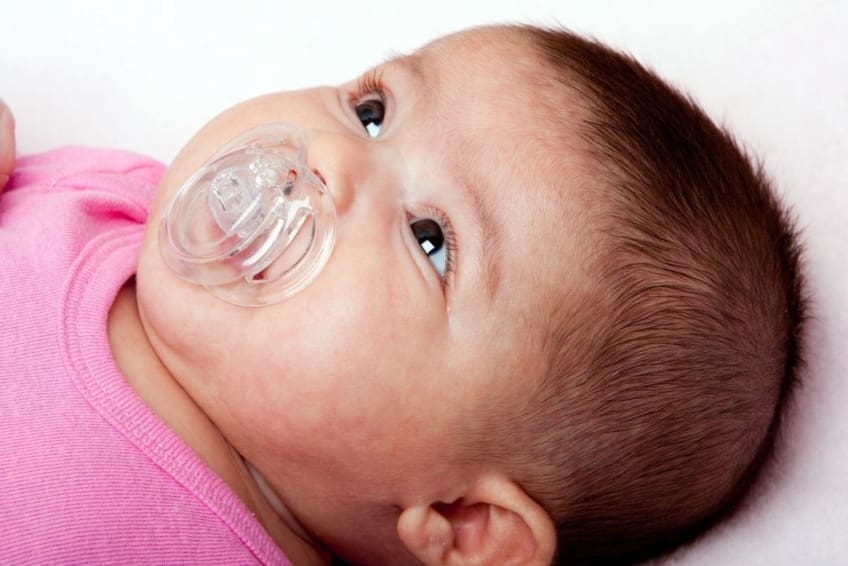Keeping a baby calm and happy is every parent’s priority, and a pacifier often becomes a little hero in achieving that. A pacifier baby can help soothe crying spells, aid sleep, and satisfy a newborn’s natural sucking reflex. However, choosing the right pacifier involves more than just picking a cute design. Safety, comfort, and material quality play a major role in ensuring a positive experience for both the baby and parents. With so many options available, it’s important to understand what makes a pacifier safe and how to select one that suits your baby’s age, preferences, and developmental needs.
Why Pacifiers Are Helpful for Babies
Pacifiers are not just comfort tools—they serve several developmental and emotional benefits. For many newborns, sucking is a natural reflex that provides a sense of calm and security. A well-chosen pacifier baby can help:
- Soothe fussiness: Babies often find comfort through sucking, helping them relax and stop crying.
- Improve sleep quality: A pacifier can help some infants fall asleep faster and stay calm through short wake-ups.
- Support self-soothing: It helps babies learn how to calm themselves without constant rocking or feeding.
- Reduce the risk of SIDS: Studies suggest that using a pacifier during sleep may lower the chances of sudden infant death syndrome (SIDS).
Key Features of a Safe Pacifier
When it comes to baby products, safety always comes first. A pacifier should meet basic hygiene, comfort, and durability standards. Look for the following features before making your choice:
- BPA-free material:
Always choose pacifiers made from BPA-free, food-grade silicone or natural rubber. These materials are non-toxic and gentle on the baby’s mouth. - One-piece design:
A single-mold pacifier is safer because it prevents small parts from breaking off and becoming a choking hazard. - Soft and flexible nipple:
A soft nipple feels more natural and is easier for babies to accept, reducing discomfort during use. - Ventilation holes:
The shield should have small air holes to allow airflow, preventing rashes and irritation around the baby’s mouth. - Easy cleaning:
Choose pacifiers that are dishwasher-safe or can be sterilized easily in boiling water. Hygiene is crucial since pacifiers spend so much time in a baby’s mouth.
Comfort Factors to Consider
Comfort is just as important as safety. Even if a pacifier meets all safety standards, it won’t be useful if the baby refuses it. Consider these factors to ensure comfort:
- Size and shape: Pacifiers come in different sizes based on age—0–6 months, 6–18 months, and above. The right size ensures a natural fit and proper oral development.
- Orthodontic design: These pacifiers are shaped to support healthy jaw and teeth alignment as the baby grows.
- Lightweight and ergonomic shield: A well-balanced pacifier stays in place comfortably without tiring the baby’s mouth.
- Soft texture: Silicone pacifiers are smooth and gentle, reducing friction on delicate skin.
Tips for Introducing a Pacifier to Your Baby
Some babies accept pacifiers right away, while others might need a little time. Here are a few tips to make the transition easier:
- Offer it after feeding: Never replace meals with a pacifier. Give it after the baby is full and calm.
- Choose the right timing: Try introducing it during nap time or bedtime when the baby is relaxed.
- Keep it clean: Always wash and sterilize before each use, especially for newborns.
- Replace regularly: Pacifiers wear out over time. Replace them every few weeks or at the first sign of damage.
- Don’t force it: If the baby doesn’t want it, try again later with a different shape or texture.
When to Stop Using a Pacifier
While pacifiers offer many benefits, prolonged use may affect dental alignment or speech development if not stopped in time. Most experts recommend weaning a baby off a pacifier between 12 and 24 months. Gradual withdrawal is the most effective approach:
- Start by limiting pacifier use to naps or bedtime.
- Offer other comfort objects like soft toys or blankets.
- Encourage verbal soothing and cuddles instead of the pacifier.
A gentle transition ensures that the baby feels secure even without it.
Keeping Pacifiers Hygienic
Babies have sensitive immune systems, so pacifier hygiene cannot be ignored. To maintain cleanliness:
- Boil or sterilize pacifiers regularly.
- Store them in a clean container when not in use.
- Avoid dipping pacifiers in sugary substances.
- Check for cracks or discoloration frequently.
Clean pacifiers prevent oral infections and ensure the baby enjoys safe comfort at all times.
Why Parents Love Pacifiers from Bachaa Party
Parents across Pakistan trust Bachaa Party for providing high-quality and safe baby essentials, including a wide variety of pacifier baby options. The store offers BPA-free, orthodontic pacifiers from trusted brands designed to promote healthy oral development and ensure maximum comfort. Each product is carefully selected for safety, style, and softness, helping parents make confident choices for their little ones. Bachaa Party also provides easy online ordering and fast delivery, making it simple for busy parents to find everything their baby needs in one place. For peace of mind and lasting comfort, Bachaa Party’s pacifiers are a perfect choice for your baby’s care routine.

